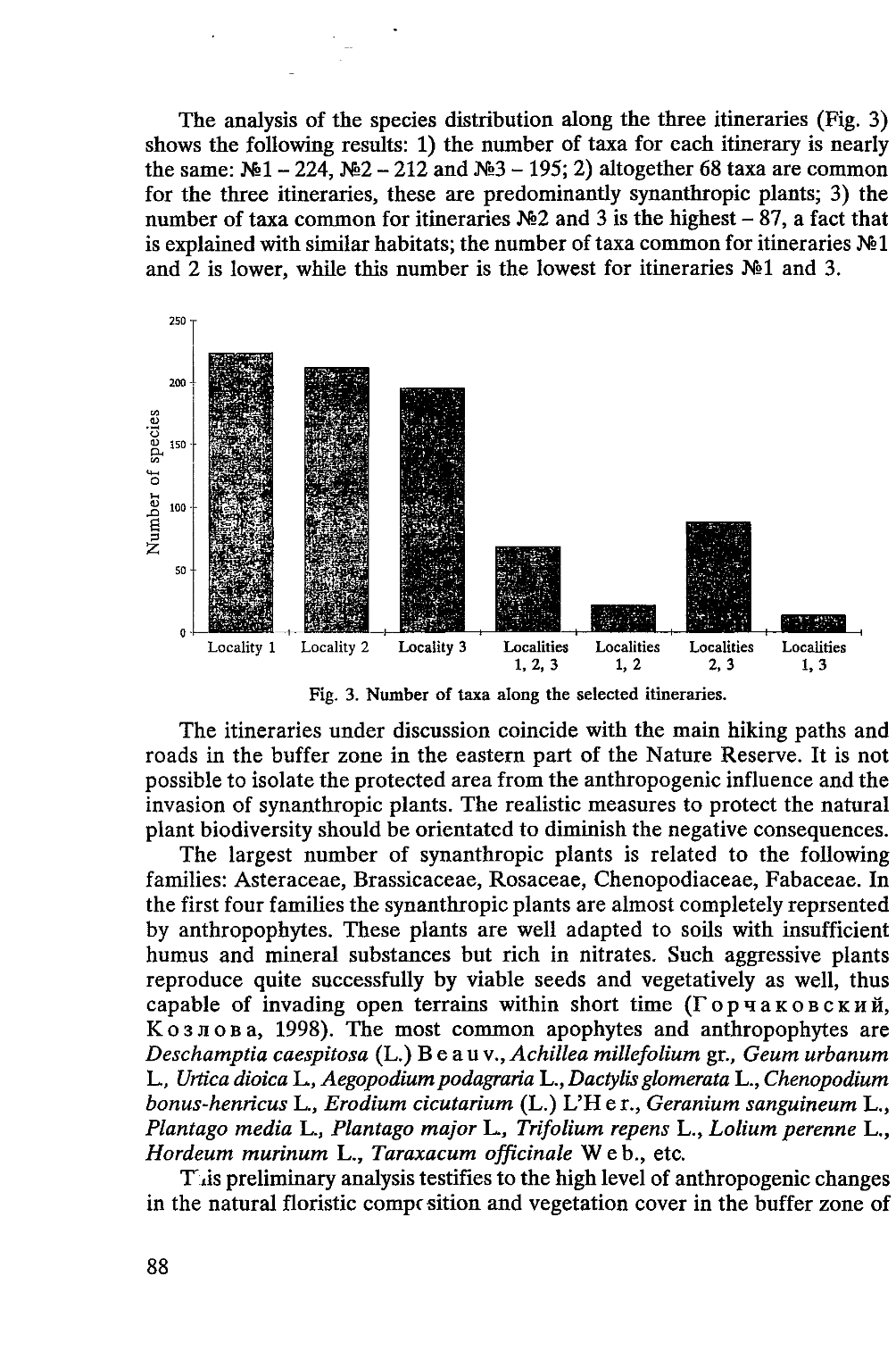

The analysis of the species distribution along the three itineraries (Fig. 3)
shows the following results: 1) the number of taxa for each itinerary is nearly
the same: №1 - 224, №2 - 212 and №3 - 195; 2) altogether 68 taxa are common
for the three itineraries, these are predominantly synanthropic plants; 3) the
number of taxa common for itineraries №2 and 3 is the highest - 87, a fact that
is explained with similar habitats; the number of taxa common for itineraries №1
and 2 is lower, while this number is the lowest for itineraries №1 and 3.
250
Locality 1
Locality 2
Locality 3
Localities
Localities
Localities
Localities
1,2, 3
1, 2
2, 3
1,3
Fig. 3. Number of taxa along the selected itineraries.
The itineraries under discussion coincide with the main hiking paths and
roads in the buffer zone in the eastern part of the Nature Reserve. It is not
possible to isolate the protected area from the anthropogenic influence and the
invasion of synanthropic plants. The realistic measures to protect the natural
plant biodiversity should be orientated to diminish the negative consequences.
The largest number of synanthropic plants is related to the following
families: Asteraceae, Brassicaceae, Rosaceae, Chenopodiaceae, Fabaceae. In
the first four families the synanthropic plants are almost completely reprsented
by anthropophytes. These plants are well adapted to soils with insufficient
humus and mineral substances but rich in nitrates. Such aggressive plants
reproduce quite successfully by viable seeds and vegetatively as well, thus
capable of invading open terrains within short time ( Г о р ч а к о в с к и й ,
К о з л о в а , 1998). The most common apophytes and anthropophytes are
Deschamptia caespitosa
(L.) Beauv . ,
Achillea millefolium
gr.,
Geum urbanum
L,
Urtica dioica
L,
Aegopodiumpodagraria
L.,
Dactylisglomerata
L.,
Chenopodium
bonus-henricus
L.,
Erodium cicutarium
(L.) L’H e r.,
Geranium sanguineum
L.,
Plantago media
L.,
Plantago major
L.,
Trifolium repens
L.,
Lolium perenne
L.,
Hordeum murinum
L.,
Taraxacum officinale
W e b., etc.
T
As
preliminary analysis testifies to the high level of anthropogenic changes
in the natural floristic composition and vegetation cover in the buffer zone of
88
Электронная Научная СельскоХозяйственная Библиотека









